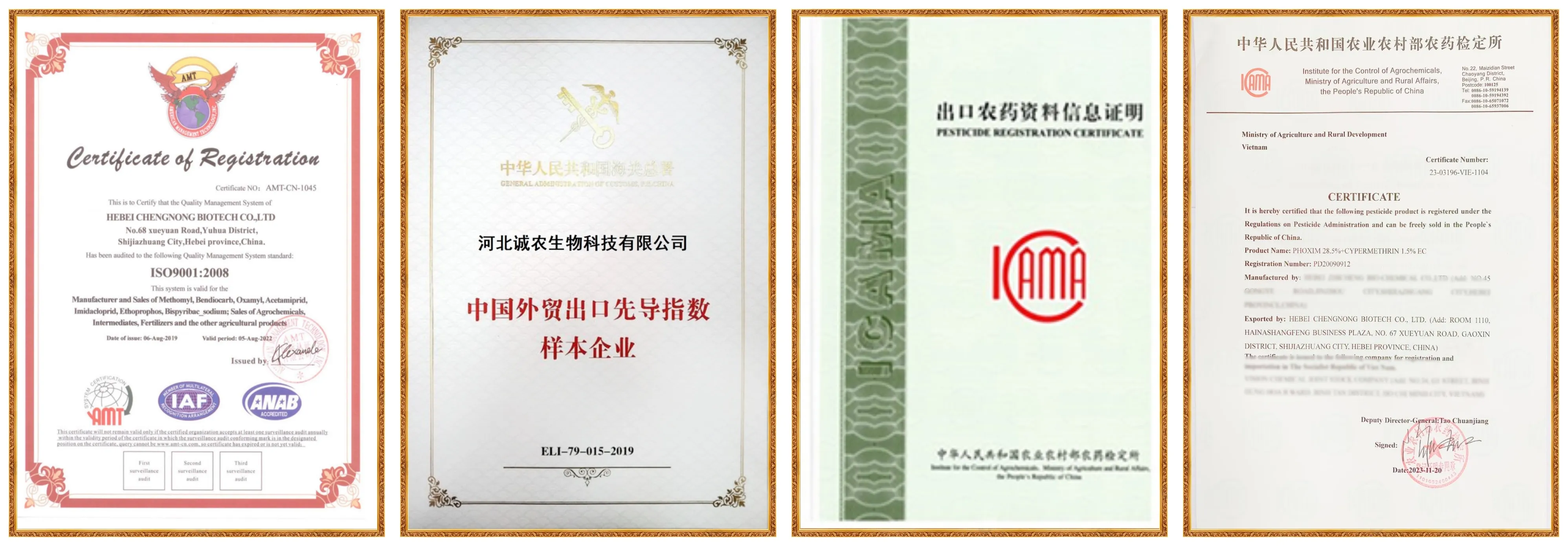
Nov . 26, 2024 06:48 Back to list
abamectin b1 products
Understanding Abamectin B1 Products Uses, Benefits, and Safety
Abamectin is a widely used pesticide derived from the fermentation products of the bacterium *Streptomyces avermitilis*. Specifically, Abamectin B1 is one of the active components of this compound, and it plays a significant role in pest management across various agricultural sectors. This article will explore the characteristics, applications, benefits, and safety considerations associated with Abamectin B1 products.
What is Abamectin B1?
Abamectin B1 belongs to the class of macrocyclic lactones and exhibits potent insecticidal and acaricidal properties. It works primarily through the disruption of neural transmission in target pests, leading to paralysis and eventual death. Abamectin B1 is particularly effective against a range of pests including spider mites, leafminers, and certain species of insect larvae. Due to its efficacy, it has become a popular choice for controlling pests in crops such as vegetables, fruits, cotton, and ornamental plants.
Applications of Abamectin B1 Products
Abamectin B1 products are available in various formulations, including emulsifiable concentrates, wettable powders, and soluble granules. These formulations are typically applied through spraying, and their usage can be tailored according to the specific pest problems faced by farmers.
1. Crops In agriculture, Abamectin B1 is widely used in numerous crops. It is particularly beneficial for high-value crops that are susceptible to pest infestations. Growers often employ it as part of integrated pest management (IPM) strategies to minimize chemical use while effectively controlling pest populations.
2. Home and Garden Beyond commercial agriculture, Abamectin B1 products are also available for homeowners and garden enthusiasts. They can be effective for managing household pests and maintaining ornamental plants.
3. Animal Health In addition to its applications in plant pest control, Abamectin is also used in veterinary medicine for the treatment of parasitic infections in livestock. This dual application demonstrates its versatility and importance in both crop protection and animal health.
abamectin b1 products

Benefits of Abamectin B1
The popularity of Abamectin B1 products can be attributed to several key benefits
- Efficacy Abamectin B1 is highly effective against numerous pests that threaten crop yields, making it an invaluable tool for growers. - Selectivity It exhibits a relatively low toxicity to beneficial insects when used correctly. This selectivity helps maintain the ecological balance within farming systems.
- Environmental Impact Abamectin B1 has low persistence in the environment, which minimizes the risk of long-term ecological disruption compared to some conventional pesticides. This characteristic aligns with sustainable agricultural practices.
Safety and Handling
While Abamectin B1 has numerous advantages, it is essential to handle it responsibly. Users must adhere to safety guidelines provided on product labels to mitigate potential risks. Personal protective equipment (PPE) such as gloves and masks should be worn during application to minimize exposure.
Additionally, understanding the potential impact on non-target species, including aquatic organisms, is crucial. Users should avoid application near water bodies and follow recommended buffer zones to safeguard local ecosystems.
Conclusion
Abamectin B1 products serve as a powerful tool in the arsenal of pest management strategies across agriculture and home gardening. Their effectiveness against a range of pests, combined with relatively low toxicity to beneficial organisms, makes them a preferred choice for many growers. However, responsible usage and adherence to safety protocols are paramount to maximizing the benefits while minimizing potential risks. As the agricultural landscape continues to evolve, understanding and utilizing products like Abamectin B1 will remain essential for sustainable pest management.
-
Kasugamycin Fungicide: Efficient Bacterial & Fungal Control
NewsAug.02,2025
-
Emamectin Benzoate: AI-Optimized Pest Control Solution
NewsAug.01,2025
-
Best Abamectin 95% | Top Pesticide for Crop Protection
NewsJul.31,2025
-
Insecticide Spirotetramat 11% + Thiacloprid 11% SC at Good Price
NewsJul.30,2025
-
Best Abamectin SDS - Premium Quality & Reliable Safety Data
NewsJul.29,2025
-
Agrochemicals Pesticides Solutions for Sustainable Farming
NewsJul.29,2025
